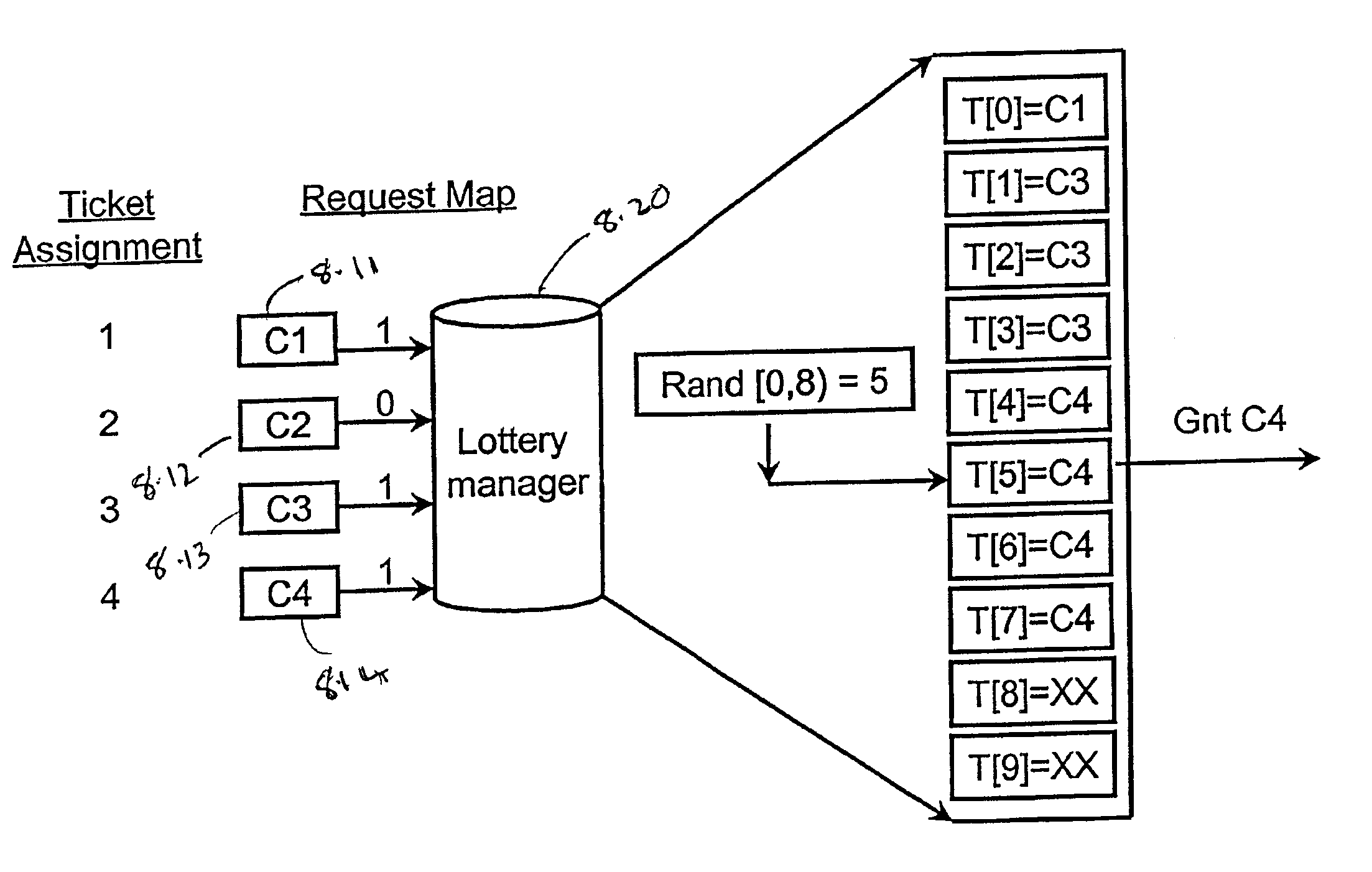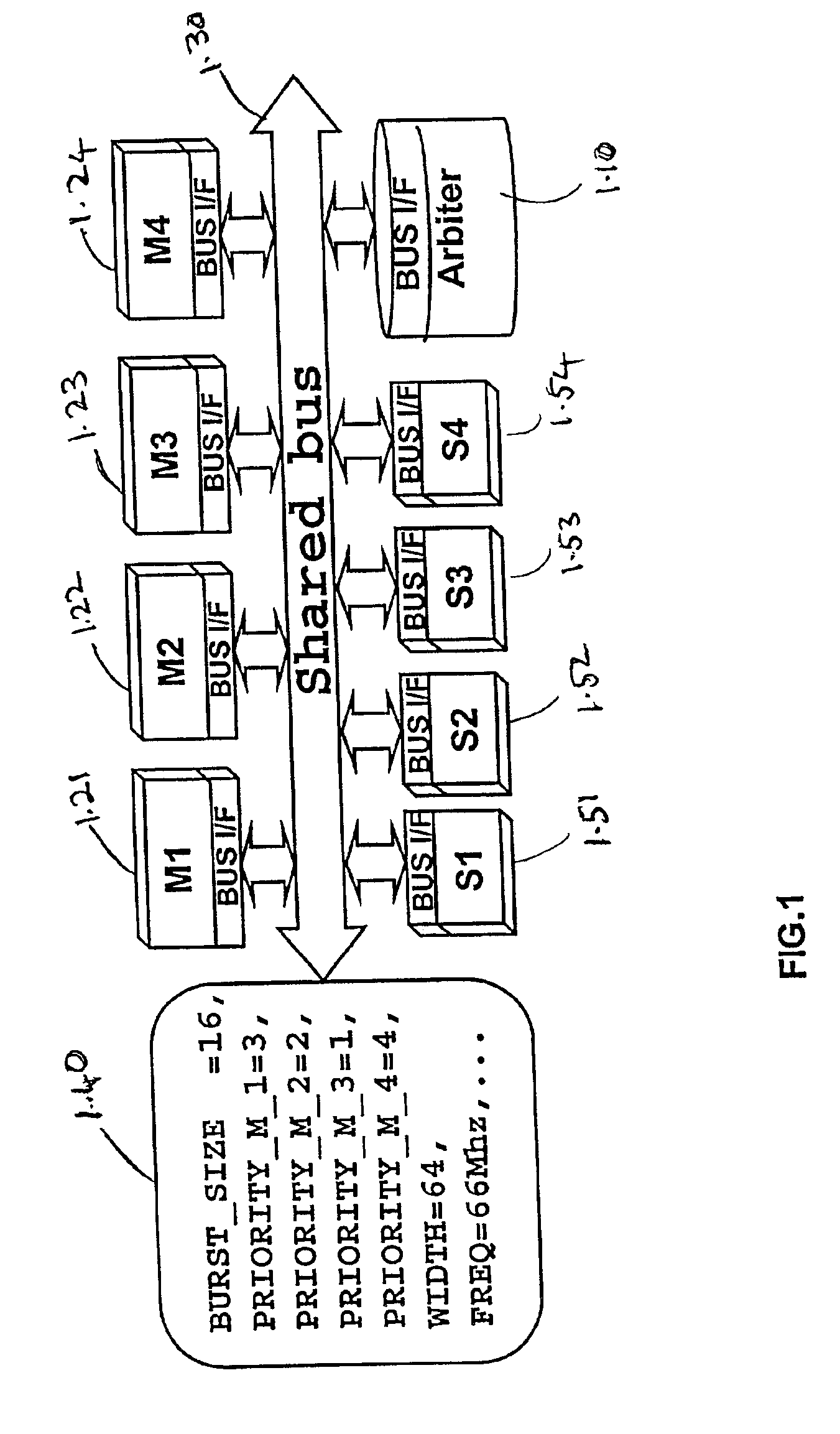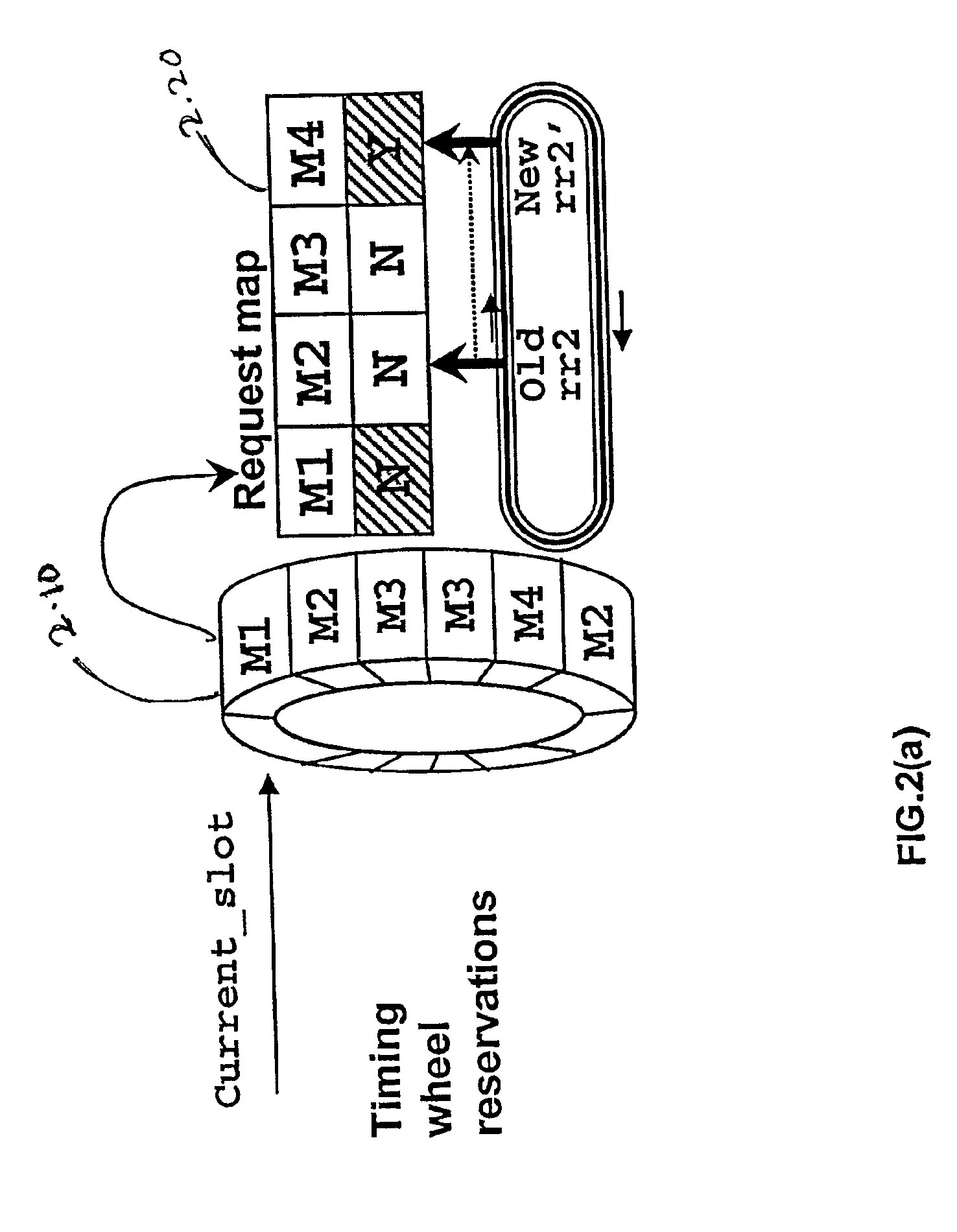High performance communication architecture for circuit designs using probabilistic allocation of resources
a communication architecture and probabilistic allocation technology, applied in the field of high-performance architectures for circuit design, can solve the problems of inability to directly apply the research in that context to the disclosed architecture in question, the traffic scheduling algorithm can afford to be more complex, and the cost of hardware implementation can be tolerated
- Summary
- Abstract
- Description
- Claims
- Application Information
AI Technical Summary
Benefits of technology
Problems solved by technology
Method used
Image
Examples
example 2
FIG. 4 shows a segment of two execution traces on a TDMA based bus. The system bus has three masters that contend for access. Slots in the timing wheel are reserved in the manner shown in the first row 4.10 of FIG. 4, with 6 contiguous slots defining the burst size of each component. The second row 4.20 and the fourth row 4.40 depict traces that show two different patterns of communication requests generated by the components, each request marked with the associated component's label. The third row 4.30 and fifth row 4.30 depict waveforms that show the actual assignment of masters to bus slots for the given reservations and request traces. From this example, the following observations can be made:Notice that in request Trace1, the requests from a particular component arrive periodically, and very well aligned with the slots reserved for it in the timing wheel. Consequently the time spent by a component in waiting for access to the bus is minimal, in this case only 1 slot.However, un...
example 3
As in Example 1, four components access a single shared bus. In this example also, the relative importance of the communications generated by a component is used to (statically) assign it a “lottery-priority”, which in turn determines its communication latencies and allocated bandwidth fraction. The experiments described in Example 1 are repeated using the LOTTERYBUS architecture instead of the static priority based architecture. FIG. 5 depicts the bandwidth fraction obtained by each component for 24 combinations of lottery-priorities. From this figure, it is observed that the fraction of bandwidth obtained by a component is directly proportional to its lottery-priority. For example, under the first 6 priority combinations, component C1 has the lowest lottery-priority, and receives on the average, 11% of the total bus bandwidth. Between combinations 2134 and 2431, it has lottery-priority equal to 2, and therefore receives approximately double, i.e., 20.8% of the total bus bandwidth....
example 4
Finally, the ability of the LOTTERYBUS architecture to provide low latency communications to high priority burst data transfers is illustrated. The experiments described in Example 2 were repeated for the LOTTERYBUS architecture, and comparative results for an illustrative class of communication traffic are shown in FIG. 6. The histogram compares the average latency of communications by each component (each having different priorities) across the two implementations of the communication architecture. The x-axis denotes the 4 different priority levels assigned to the four components. For each point on the x-axis, the columns compare the average number of bus cycles spent in transferring a single bus word (including time spent in acquiring and using the bus). The communication traffic for this experiment consisted of regular small requests for access to the bus from the lower priority components, and occasional bursty demands from the high priority components. From this figure, it can...
PUM
 Login to View More
Login to View More Abstract
Description
Claims
Application Information
 Login to View More
Login to View More - R&D
- Intellectual Property
- Life Sciences
- Materials
- Tech Scout
- Unparalleled Data Quality
- Higher Quality Content
- 60% Fewer Hallucinations
Browse by: Latest US Patents, China's latest patents, Technical Efficacy Thesaurus, Application Domain, Technology Topic, Popular Technical Reports.
© 2025 PatSnap. All rights reserved.Legal|Privacy policy|Modern Slavery Act Transparency Statement|Sitemap|About US| Contact US: help@patsnap.com



